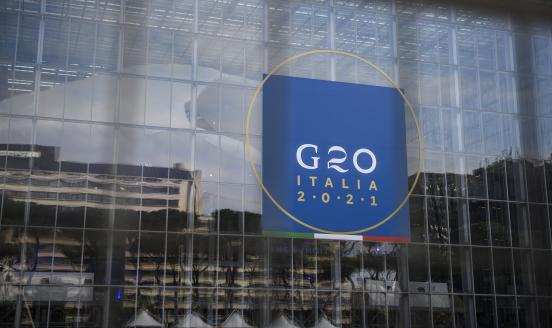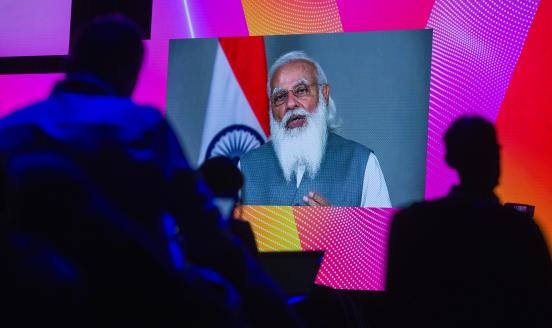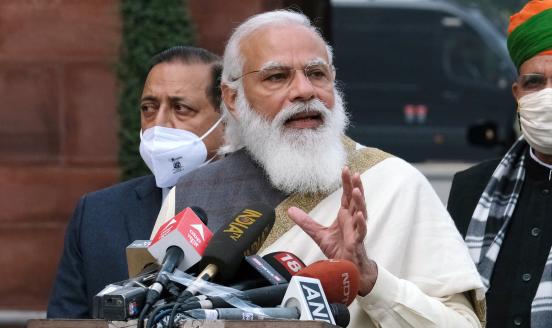Long-term growth potential, or dead in the long run?
By linking growth with both employment and the imperative for India to hold its own with China for strategic autonomy, Prime Minister Modi has brought
For the tribe of policy economists, Navratri and Durga Puja this year had an excitement beyond the ordinary. The source of this was an article last Wednesday by former BJP finance minister Yashwant Sinha in the Indian Express, expressing his concern for the present state of the economy and its future prospects. He feared it was headed for a hard landing, as a result of poor policy judgment and self-inflicted shocks.
Given his seniority and experience Mr Sinha’s cri de coeur has understandably provoked a massive outpouring of political and professional commentary. This has included a contribution by his son, Jayant Sinha, minister for civil aviation in the Modi government. Remarkably, this somewhat geeky debate has been taking place not in the business newspapers but in India's general dailies. The debate has been about growth, reform and the differential human impact of such reform.
This is new, and important. The importance of growth as a national goal is itself comparatively recent. From the rural idyll proposed by Gandhi to the ideology of India’s influential Greens, for most of the last century fast growth has been viewed with suspicion and disdain both by politicians and large parts of the intelligentsia. In academia the view on Indian economic reform is that this has been largely a technocratic venture, with only shallow political support.
[popular-tags]
While former prime minister PV Narasimha Rao played a critical role in India’s 1991 reforms, recent writings have explored the reasons why he chose to remain in the background rather than leading from the front. And despite the considerable success of the first UPA government in presiding over an era of fast growth, Congress president Sonia Gandhi remained wary of the ‘brand’, fearing it would be seen as anti-poor (it isn’t) and associated with fat cats (which it became).
By linking growth with both employment and the imperative for India to hold its own with China for strategic autonomy, Prime Minister Modi has brought sustainable, high quality, inclusive economic growth to the centre of political discussion, which is where it rightfully belongs.
Economists distinguish between policies that raise potential output (sometimes called supply-side policies) and the determinants of actual, statistically measured growth driven by aggregate demand. While conceptually important, potential output is difficult to measure. The difference between the two is referred to as the ‘output gap’.
A negative output gap describes a situation where actual output lies below accepted estimates of the (non-inflationary) growth potential of the economy. By extension, a positive output gap describes a situation where the economy runs the risk of overheating. Commentators seeking fiscal and monetary stimulus of the economy at the present time (not including myself) implicitly believe the economy currently suffers from a negative output gap, despite a growing current account deficit.
The above conceptual framework has been primarily evolved to guide policy in the advanced countries. In those economies potential output is driven by the growth in the labour force and trends in labour productivity although, other than education there is little agreement on how policy affects labour productivity.
The relevant theory, if anything is more uncertain for emerging and developing countries. The experience of India's Asian peers provides some basis for believing that improving the performance of markets of goods (through trade and competition), of factors of production (land, labour and capital), and absorption of leading edge technology (through foreign direct investment: FDI) can all help to enhance productivity levels and, more speculatively, productivity growth.
The comments of Sinha pére et fils (father and son) can be better understood within this framework. Minister Jayant Sinha refers to the many structural initiatives of the Modi government which hold the promise of raising the long-term growth potential of the economy. They aim to do so primarily by addressing the scourge of informality in Indian labour markets. Like John Maynard Keynes, Jayant’s father clearly believes that in the long run we are all dead and that not enough attention has been paid to the current distress generated by these initiatives, notably demonetisation and the introduction of the goods and services tax (GST). He is also concerned with the continuing slump in private investment which reflects both policy uncertainty and stressed balance sheets.
These contrasting perspectives from two sincere, credible and experienced leaders in turn raise issues of timing, sequencing, quality of implementation, impact monitoring, compensatory action, communication and the overall coherence of policies. Reform in the absence of a crisis is not easy in any democracy. Growth at 7% (the recent record) or 5.7% (the most recent quarter) can in no sense be considered a crisis of the kind that India faced in 1991.
Given an improving global economy and the government’s enhanced political capital in the first half of this year, a slowing economy provided insufficient reason to delay the introduction of GST even after the undoubted surprise of demonetisation. Of greater substance and concern are weaknesses in implementation that both demonetisation and the GST have revealed. Of the two, the first is perhaps of greater concern as this was largely in the domain of a single entity, the Reserve Bank of India, which is widely (and in my view justifiably) seen as the most competent and professional regulator in the country.
The GST story is still unfolding but the initial reports are somewhat dismaying, even though unlike demonetisation, there was no need for secrecy. It is unfortunate that partisan politics will probably not allow an objective, neutral assessment of the implementation of both these gargantuan initiatives.
Finally the goal of moving a large share of India’s labour force out of informal employment is a huge undertaking with lots of scope for misery and distress along the way. With new leadership in NITI-Aayog and a revived Economic Advisory Council, the government should develop and communicate a discussion document sketching the next steps on this journey.



